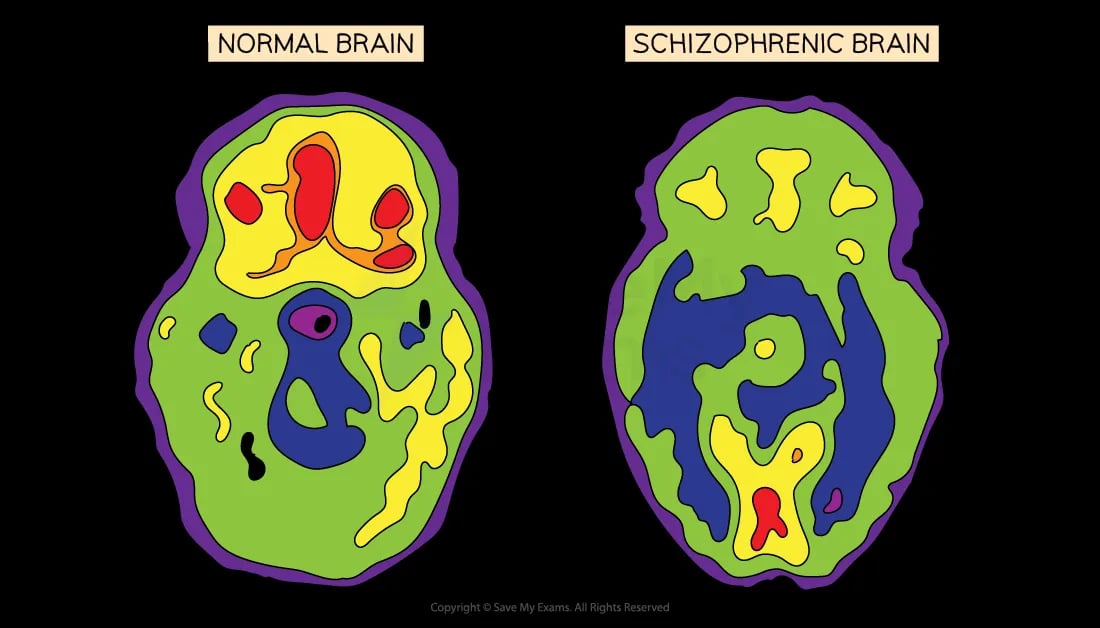Discuss neural correlates of schizophrenia.
[8]
AO1 = 3 marks, AO3 = 5 marks
For 6-8 marks the answer should provide a clear and coherent outline of the neural correlates explanation of schizophrenia, using a good level of detail. Effective use of examples should be given to support the points made. There should be confident use of terminology. Evaluation should be effective and should focus on biological explanations.
For 4-6 marks the answer should give a reasonably clear outline of the neural correlates explanation of schizophrenia, with some detail involved. There may be some lack of expansion or development of ideas. There should be some use of terminology. Evaluation will be present but may lack depth or range.
For 1-3 marks the answer will be only partially successful in providing a clear outline of the neural correlates explanation of schizophrenia, with possible inaccuracies present. Terminology will be sparse and there may be some vagueness or ambiguity to the response. Evaluation is likely to be sparse or absent altogether.
Possible answer content could include:
AO1: The dopamine hypothesis suggests that schizophrenia is due to dysfunctional dopamine neurotransmission either due to hyperdopaminergia in the subcortex (overly high levels of dopamine) linked to positive symptoms or hypodopaminergia in the cortex (low levels of dopamine) linked to negative symptoms. The ventral striatum has also been implicated in the development of avolition as this area is associated with reward and motivation. Research has found lower activity in the ventral striatum is associated with higher levels of avolition. A genetic explanation looks at the heritability of schizophrenia, with candidate genes being implicated in the onset of schizophrenia, particularly genes which have been linked to the action of dopamine.
AO3: Research suggests that dopamine may play a key role in schizophrenic symptomatology e.g. et al. (1999), Desbonnet (2016) with brain-imaging studies demonstrating high activity in dopamine-rich areas of the brains of schizophrenics. There may, however, also be other neurotransmitters involved in schizophrenia: Grunder & Cumming (2016) point out that the dopamine hypothesis should be modified to include the role of glutamate as a key contributory factor in promoting schizophrenic symptoms. There is also the issue of cause/correlation to consider as it is still unclear as to whether abnormal brain activity in specific regions such as the ventral striatum actually causes schizophrenia or is the relationship between the two the result of other factors as yet unknown? This is an issue with all biological explanations: they do not account for a range of other factors which may equally contribute to schizophrenia e.g. home life, socio-economic status, stress, education, environmental factors such as pollution, noise, overcrowding etc.



